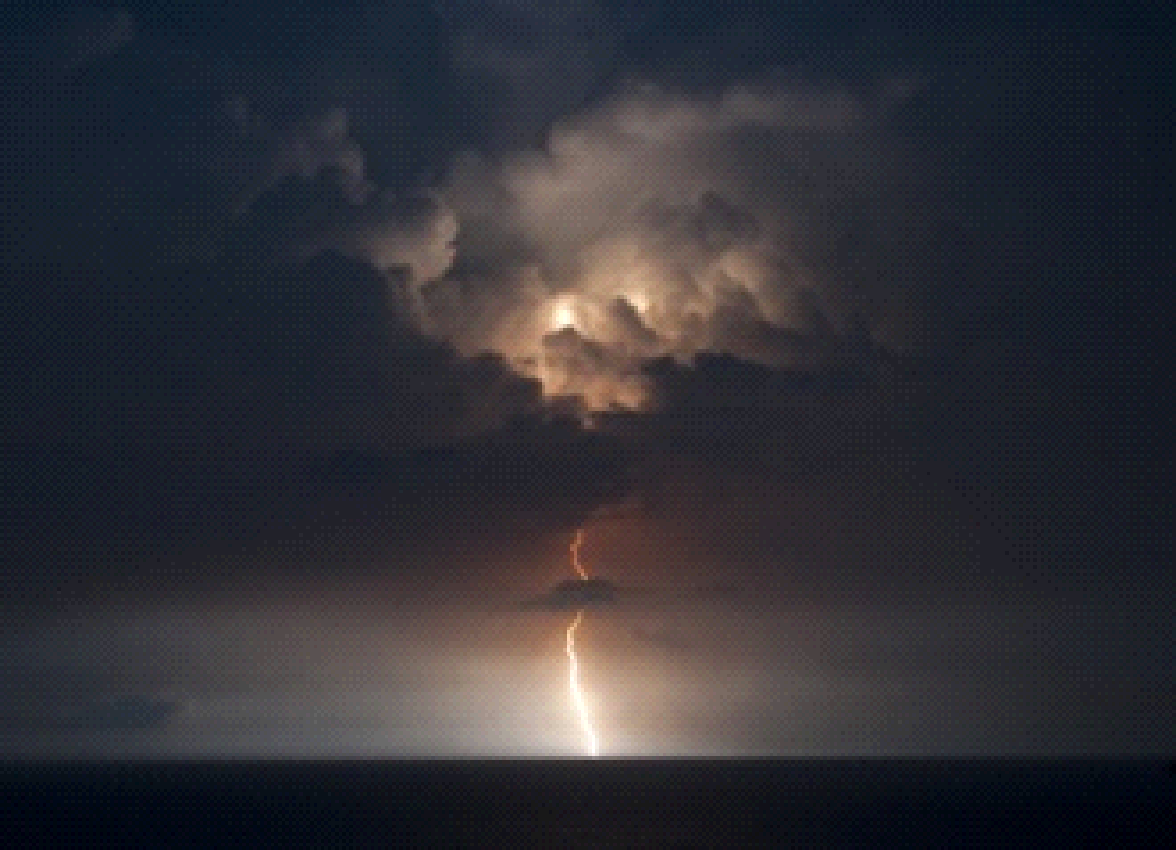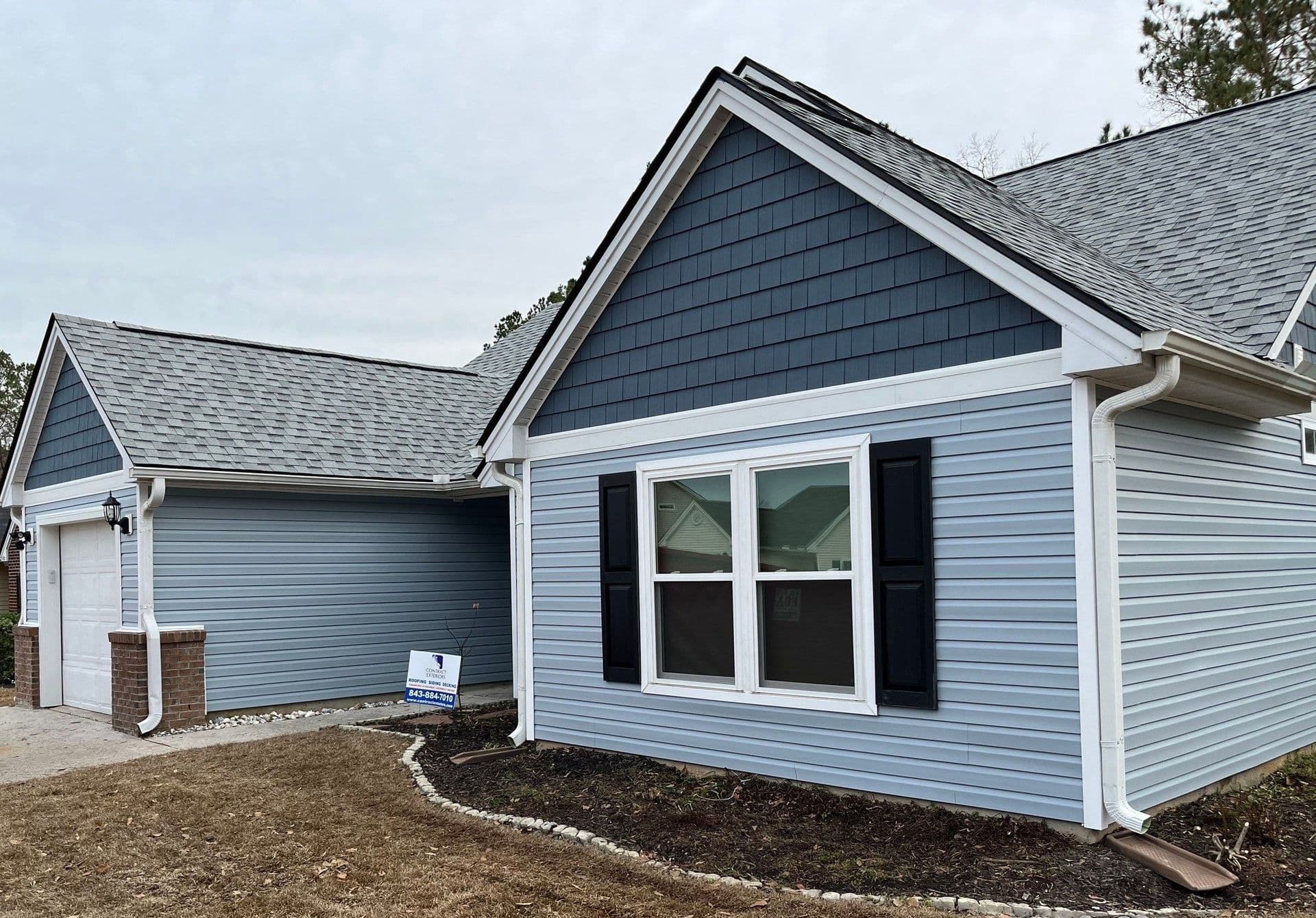It’s Not An Emergency Until It Happens To Your Home

As a roofing company, our team at Contact Exteriors has the opportunity to see extremes in roofing needs. On one hand, we work with optimistic homeowners who are looking to make positive changes for their homes with a new roof, siding, or deck. On the other hand, we work with homeowners whose homes have been damaged in tragic accidents — many of which are a result of weather. After all, it’s not an emergency until it happens to your home.
Whatever the case may be, we work closely with you, the homeowner, to make sure you know your options. This helps you make the best choice when it comes to installing a new roof. We want your home to be beautiful, functional, and resilient.
We install weather-resistant siding and roofing all over the Carolina Coast, but we also work with homeowners who aren’t concerned about the weather until something catastrophic happens.
Flooding
Along the Carolina Coast, heavy rain can lead to flooding in some areas. Even though we know it’s a possibility, we tend to think we’re immune until it actually happens. We’re not saying it to point fingers at anyone, we’re just saying it because it’s true. We’ve all operated by that logic at some point in our lives.
Unfortunately, we can’t control the weather. We can, however, prepare for it, and we can follow best response practices in an emergency. If you live in an area where flooding is even a remote possibility, you’re doing your home and your family a huge favor by preparing and planning.
- Flood Insurance – If you live on the Carolina Coast, flooding is a real possibility. Buying flood insurance is in your best interest.
- “Flood Box” – Create a “Flood box” in a waterproof container. Include your insurance policy, important documents, and an inventory of household items and possessions
- Sump Pump – If you can find one that will work with your home’s drainage system, invest in a sump pump. Popular Mechanics has a great writeup and diagram to explain more. Also, consider buying a water alarm.
- Clear Gutters – Clear your gutters, drains, and downspouts regularly. If you’re about to experience heavy rain, double check them before the storm starts.
- Safety Kit – Build a safety kit with drinking water, a first aid kit, blankets, a radio, a flashlight, an emergency phone charger, cash, hygiene products, and non-perishable food. Use a waterproof container to store the items in.
- Move Valuables – If you think your home is going to flood, move your valuables to a higher floor or elevation. This includes furniture, electronics, photo albums, etc.
- 911 – Post emergency phone numbers in a set location and teach your children how to dial 911. Also teach them how to talk to the operator and how to remain calm in an emergency.
- Evacuation – Plan and practice an evacuation route, based on safe routes to higher ground.
- Emergency Contact – Have an out-of-town or out-of-state contact (friend or family member) in case you need to evacuate.
- Pets – Factor your pets into your preparation and evacuation plans. They get anxious and scared as much as we do.
- Shut off Power, Water, Gas – Follow your utility company’s procedures for shutting off water, gas, and power to rooms that might become flooded.
Even if you prepare and evacuate properly, a flood still might damage your home’s foundation. If that’s the case, call your insurance company and get an inspection performed from a qualified contractor, as soon as possible.
Heavy Winds
Fall is quickly approaching and that means one thing for us — heavier winds. Not all of our windstorms cause damage, but it’s not unheard of, either. Wind is an inevitability along the Carolina Coast in autumn, so it’s best to prepare.
Wind starts to cause real damage to trees at 39 mph, and once it gets up to 64 mph, real damage to your home is possible. Even if you’ve lived through dozens of heavy wind warnings without a scratch, take wind warnings from the local weather service seriously. Protect your home and your family.
- Safe Place – Find a room on the lowest level of your home, away from any windows. The more walls between you and the outside storm, the safer you’ll be.
- Inspection – Inspect your doors, windows, and roof. Make repair arrangements for loose, damaged, or missing shingles. Make sure your window caulking and door jambs are in good shape.
- Outdoor Furniture – Keep a mental inventory of your patio furniture and other outdoor equipment. Make sure you bring it inside before the wind starts.
- Trees – Check your trees for any branches measuring more than six inches in diameter that hang over your home and take them down if they look weak or damaged. If you’re not sure, get an inspection from an arborist or other qualified professional.
- Emergency Kit and Evacuation Plan – Your emergency kit and evacuation plan should work in the event of damaging winds, as well.
- Secure Furniture – Top heavy items such as bookshelves should be mounted to the wall. If you have time, move furniture away from doors and windows.
In the event of lost power or downed power lines, you might want to have a small power generator on-hand. Call your electric company and follow their advice before taking any action. It might take a while, but professionals will handle the power lines.
FEMA has some excellent resources on further preparing your doors, windows, and other areas of your home for heavy winds.
Thunderstorms
Some people love thunderstorms– smelling the rain, hearing the crash of the thunder, and watching the lightning arc across the sky. Some people are less enthusiastic about thunderstorms, and spend their time fretting and wishing for them to be over.
While there’s no use worrying, since you can’t stop nature, there are some preparatory steps you can take to protect your home from hail, high winds, and lightning — even if you love thunderstorms.
- Tree Branches – Trimming and removing weak or dead branches that extend over the home will protect you against lightning strikes, as well.
- Surge Protection – Though it’s not 100% foolproof, placing your entire home on a surge protection system is a wise move.
- Unplug Electronics – If there’s even a remote possibility of lightning coming your way, unplug your electronics and appliances– especially computers.
- Avoid Water – During intense thunderstorms, avoid washing your hands, showering, doing laundry, or doing dishes. Pipes conduct lightning.
- Lightning Rod – A lightning rod can protect your home from lightning-induced fires.
- Avoid Doors and Windows – Thunderstorms often bring hail and high winds, so stay away from windows and doors. If you have time, shut your blinds so broken glass cannot easily enter your home in the event of window damage.
Extreme weather is a fact of life along the Carolina Coast, but you can protect your family and your home with a little bit of pre-planning and prepping. Emergencies are rare, but they can happen– and it’s best to be prepared and calm, with a backup plan set in place.
We’re a local roofing company, but we’d rather see your roof protected from the elements, because you follow best practices, than install a new roof because extreme weather damaged your home. Some damage is unavoidable, and we’re always available to help in those cases, but we want to see you safe and happy, even when the weather turns bad.
Premeditated Excellence
Randy Hann




